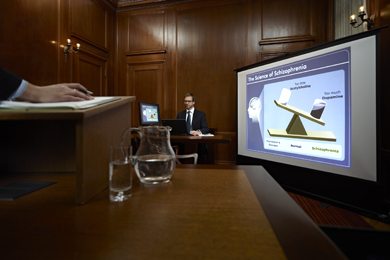Trial Presentation Trusted Experts in Courtroom Technology and Graphics
Captivate the Jury: Crucial Components of a Powerful Test Presentation
Essential aspects such as understanding the audience, crafting an engaging narrative, and grasping spoken and non-verbal communication are crucial elements of an efficient discussion. As these elements link, they create a cohesive approach that not only educates yet also involves jurors on numerous levels.

Comprehending Your Target Market
Comprehending your target market is a crucial facet of effective trial presentation. An effective discussion rests on the capability to comprehend the demographics, worths, and proneness of jurors. This understanding educates just how debates are mounted, proof is offered, and emotional allures are crafted, ensuring that the message resonates with the jurors on a personal level.
Study suggests that jurors come from varied backgrounds and may have differing levels of understanding regarding lawful procedures. Furthermore, understanding the jurors' potential prejudices and life experiences enables the trial speaker to expect objections and address concerns proactively.
Effective trial presentation additionally involves observing jurors' responses throughout the procedures. Involving with jurors as individuals rather than a cumulative system is essential in promoting a solid connection in the court.

Crafting a Compelling Story
Crafting a compelling story is vital in directing jurors via the complexities of an instance. A well-structured story not only streamlines elaborate lawful ideas yet likewise involves jurors on an emotional degree, making the information extra relatable and unforgettable.
To achieve this, attorneys need to start by recognizing the core message they wish to share. This message ought to reverberate with the jurors' values and experiences, cultivating a connection that transcends plain truths. The story should unravel logically, providing occasions in a clear sequence to prevent complication. This chronological technique can aid jurors comply with the development of events, highlighting reason and effect.
Incorporating human aspects-- such as individual stories or stories-- can further enhance the narrative's effect. These components stimulate compassion, allowing jurors to imagine the repercussions of the case on the real worlds. In addition, utilizing a constant style throughout the discussion enhances the major argument, making it much easier for jurors to maintain crucial points.
Ultimately, a compelling narrative transforms a test presentation from a simple recounting of truths into a convincing story that mesmerizes the court, encouraging them to deliberate with both factor and feeling.
Making Use Of Aesthetic Aids
Including aesthetic help into a trial discussion can dramatically improve jurors' comprehension and retention of information. Aesthetic materials such as charts, representations, pictures, and videos can change complicated legal principles and proof right into easily absorbable styles. By engaging numerous detects, these aids permit jurors to imagine the case's crucial elements, making it easier for them to adhere to along and comprehend elaborate information.
Additionally, well-designed visual help Check This Out can highlight crucial points and highlight relationships in between different items of proof. Timelines can successfully highlight the series of events, while annotated images can make clear specific details relevant to the instance. This not only help in understanding yet likewise enhances the narrative offered by the lawyer.
Overly complicated or cluttered visuals might bewilder jurors and take away from the message. Eventually, effective aesthetic communication can be a powerful tool in encouraging jurors and aiding them get to notified final thoughts.
Understanding Verbal Communication
Reliable spoken communication is vital in a test presentation, as it offers as the key ways with which attorneys convey their debates and attach with jurors. Simpleness in language fosters understanding and helps jurors grasp intricate problems provided during the test.
Moreover, tone and pacing dramatically effect how messages are received. A certain tone communicates authority, while suitable pacing permits jurors to take in information without really feeling overwhelmed. Attorneys need to additionally differ their vocal inflections to stress bottom lines and keep jurors' rate of interest throughout the discussion.
In addition, the organization of spoken disagreements is necessary. Structuring the narrative rationally and coherently helps jurors comply with the attorney's logic, making it simpler for them to retain important information. Making use of persuasive strategies, such as storytelling, can additionally enhance the emotional vibration of the arguments offered, thus developing a click to read more extensive link with jurors.
Eventually, mastering spoken communication not only reinforces an attorney's instance but likewise cultivates count on and connection with the court, substantially boosting the chances of a desirable verdict.

Engaging With Body Movement
Nonverbal interaction plays an important duty in trial discussions, commonly conveying messages that words alone can not share. Body language, including gestures, stance, faces, and eye call, considerably affects how jurors view the integrity and sincerity of the presenter. A certain stance, with shoulders back and an open pose, can infuse count on, while closed-off body movement may More about the author suggest defensiveness or unpredictability.

Faces need to reflect the emotions related to the instance, enhancing the narrative existing. For example, a sincere expression during an emotional moment can generate empathy and strengthen the psychological charm. Ultimately, grasping body movement is essential for reliable trial discussions, as it enhances verbal communication and establishes an engaging existence that resonates with the court.
Conclusion
To conclude, captivating the jury requires a tactical approach that includes understanding the audience, crafting a compelling story, utilizing aesthetic aids, grasping spoken interaction, and engaging through body language. Each component plays an essential function in developing a powerful test presentation that resonates with jurors on both psychological and intellectual levels (trial presentation). By integrating these components efficiently, lawyers can substantially improve their capability to persuade and affect jury decision-making